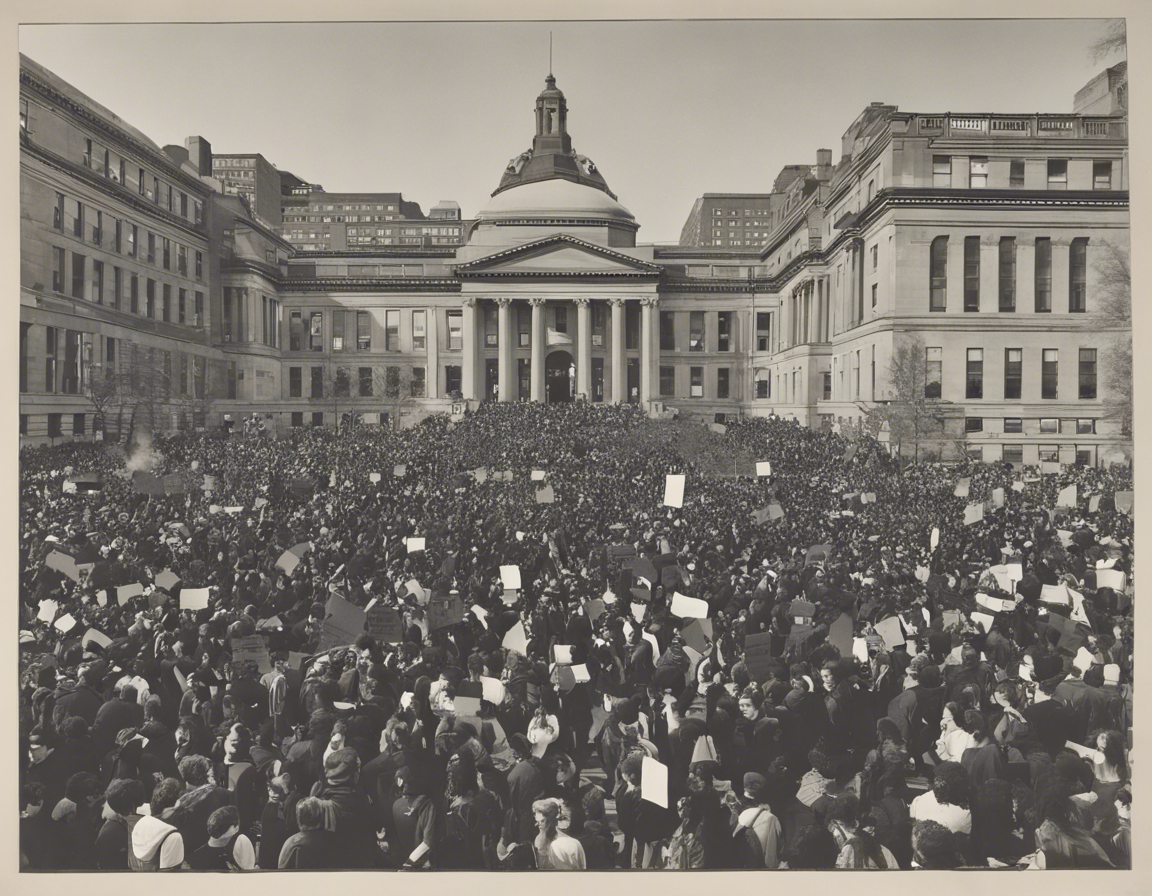The recent protests at Columbia University have sparked debate and raised crucial questions about freedom of speech, campus activism, and the role of universities in addressing social issues. What occurred on campus, who was involved, and what are the implications of these events? Let’s delve into a comprehensive analysis of the protests that took place at Columbia University.
Background
Columbia University, located in New York City, is renowned for its academic excellence and vibrant student body. However, like many institutions of higher education, it grapples with social justice issues, diversity concerns, and political tensions on campus. In recent years, student activism has been on the rise, with various groups advocating for change and pushing the university to address systemic inequalities.
The Protests
The recent protests at Columbia University were sparked by a series of events that unfolded on campus, culminating in a student-led demonstration that garnered national attention. The protests were primarily focused on racial justice, police brutality, and institutional racism, echoing the sentiments of the broader social justice movement happening across the country.
Key Players
The protests involved a diverse group of students, faculty members, and community activists who came together to demand change and raise awareness about pressing issues affecting marginalized communities. Student organizations, such as the Black Student Organization and the Latinx Student Union, played a pivotal role in organizing the protests and mobilizing support.
Demands
Central to the protests were a set of demands aimed at holding the university administration accountable for its actions, promoting diversity and inclusion on campus, and reimagining campus safety and security. These demands ranged from increasing funding for minority student organizations to divesting from companies that profit off of mass incarceration.
Implications
The protests at Columbia University have broader implications for the future of campus activism, academic freedom, and institutional reform. They have reignited conversations about the role of universities in addressing social justice issues, the limits of free speech on campus, and the need for genuine structural change within academic institutions.
Challenges and Controversies
Like all forms of protest, the demonstrations at Columbia University were not without challenges and controversies. Some critics questioned the tactics used by the protesters, while others raised concerns about the impact of the protests on academic freedom and intellectual diversity. Balancing the right to protest with the principles of academic discourse remains a complex and ongoing challenge for universities.
Moving Forward
As the dust settles on the recent protests, the Columbia University community is left grappling with important questions about how to move forward in a constructive and inclusive manner. While the protests were a powerful expression of dissent and a call for change, translating that energy into tangible outcomes will require sustained dialogue, collaboration, and a commitment to social justice.
FAQs
Q: What were the specific incidents that led to the protests at Columbia University?
A: The protests were sparked by a series of events, including incidents of racial discrimination on campus, concerns about the university’s ties to law enforcement agencies, and broader societal issues such as police brutality and systemic racism.
Q: How did the university administration respond to the protests?
A: The university administration issued statements expressing support for peaceful protest and acknowledging the concerns raised by the demonstrators. They have committed to engaging in dialogue with student groups to address their demands.
Q: Were there any instances of violence or vandalism during the protests?
A: While the protests were largely peaceful, there were isolated incidents of tension and confrontation. The vast majority of participants conducted themselves in a peaceful and respectful manner.
Q: Is campus activism common at Columbia University?
A: Yes, Columbia University has a long history of student activism and social justice movements. Students have led protests on a wide range of issues, from divestment campaigns to calls for greater diversity and inclusion on campus.
Q: What long-term impact do you think these protests will have on Columbia University and other academic institutions?
A: The protests have the potential to catalyze meaningful change at Columbia University and inspire other academic institutions to re-evaluate their policies and practices. They have reignited conversations about race, equity, and social justice in higher education.
